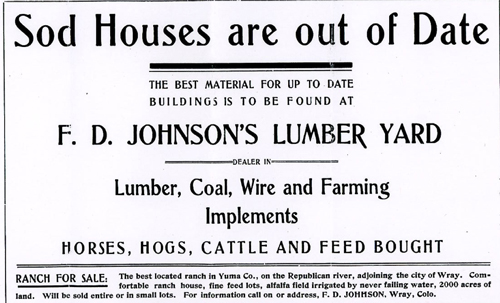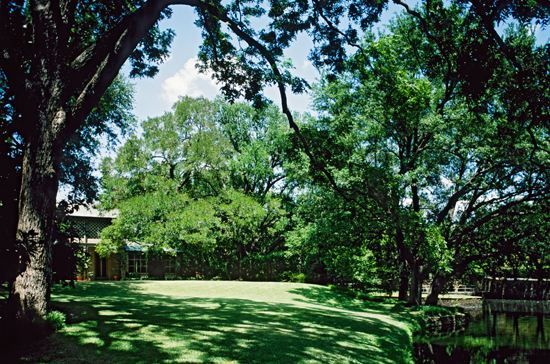
Russell Martin, Director and Librarian of Southern Methodist University’s DeGolyer Library, one of my favorite places and the home of many extraordinary collections, sent me this ad from 1907 extolling the value of wood over sod as a building material for houses.
Architect David Williams Grew Up in a Sod House
David Williams, FAIA, (1890–1962), obviously took notice of the many opportunities wood provided for houses, but he never lost sight of his pioneer roots. Like Everett DeGolyer who donated his library to SMU, Williams grew up in the late 1800s in a sod house in Kansas (presumably the part of Kansas that was originally part of the Republic of Texas until it was sold to pay off Texas’ war debt). He was determined to draw upon the indigenous qualities of Texas pioneer houses and blend them with the tenets of European modernism. His goal was to develop a style as modern as anything in Europe and as regionally inspired by Texas as Frank Lloyd Wright’s modern style was inspired by the Midwest.
Architects David Williams and O’Neil Ford Developed the Texas Modern Style Still Thriving Today

Along with O’Neil Ford, FAIA, David Williams designed the first Texas modern home, placing a great emphasis on the environment, orientation of the home, and materials in the same way that the Texas pioneers did. Pictured above is a home in University Park, built in 1933 and the earliest home fully expressing this Texas modern style.
David Williams, FAIA, Designed Texas Modern Homes that Reflected Pioneers Adding on to Their Homes
In the Texas modern tradition, as resources became available over time, the original one room house with a porch would become a hierarchy of structures for the needs and functions of the family. Architect David Williams designed a series of attached structures to create a sense of a Texas compound.


O’Neil Ford, FAIA, and David Williams, FAIA, Used Wood in the Spirit of Pioneers

By the 1930s, lumber had long been the common building material. David Williams and O’Neil Ford incorporated wood in the spirit of the Texas pioneers to further their design. The structural wood and decorative elements of their designs were often one and the same. Exposed hand sawn lumber became decorative and integral components of the structure. Whether it was wood, wrought iron, or stamped metal, artisanship was considered key to the integrity of the architecture and the Texas modern style.

Would David Williams Be Designing Sod Houses Today?
While David Williams might not be designing pure sod or hay bale houses, one would think that he would be drawing from his experience living in a sod house to fully explore green architecture. Before he came to Dallas, David Williams had made some money and gained some experience designing residential developments in Mexico. After two decades in Dallas, David Williams joined the Roosevelt Administration to help develop low-cost housing and planned communities. Today, David Williams would likely be in the forefront of green development, planned developments, and sustainable communities.

Architect David Williams Would Have Reinterpreted the Tradition of Sod Houses into 21st Century Green Architecture
I imagine David Williams, if he were a young architect today, declaring his intent to continue the tradition of the Texas modern style of orienting houses, to capture summer breezes and the low winter sun, while shielding houses from the harsh west sun in the summer, maintaining the essential design elements of classical modernism, all the while exploring materials that were honest, sustainable and reflective of America’s growing interest in the environment. A green house from the architectural studio of David Williams would first and foremost exude good design.




